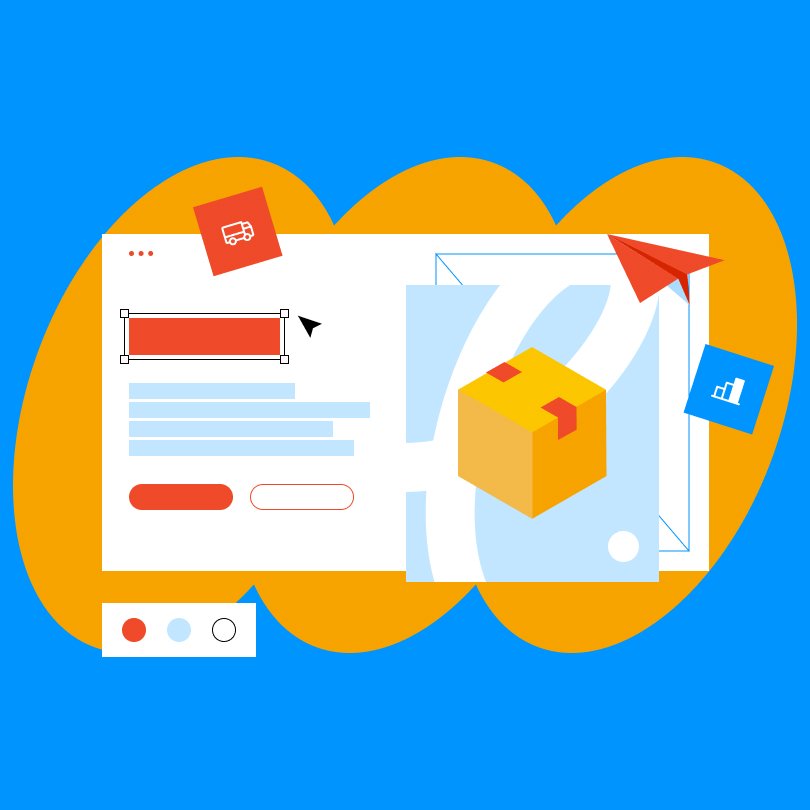The price of the website development project is among the most important questions of every company that plans to create a digital presence for its business. Experts in this field, digital marketing agencies and IT companies can provide you with a cost estimate relatively quickly, but the question of how that price is determined is a more complex issue.
The fact that a website can cost you from $500 to $15,000 illustrates this complexity fairly enough. Whether the existing structure is used for the development, which then only needs to be upgraded according to your needs, or whether a custom model of development is used significantly affects the price (among other things). In custom web development, an IT expert programs the entire site without using existing templates.
A company or an individual considering hiring an expert for website development has every right to know exactly how the price of the website development project is determined and the factors that affect it. This is often not sufficiently explained to business owners in need of website development services. This article will therefore provide a detailed guide on what the website development procedure looks like and what is it that affects the cost of these projects.
Why is a Website Important for Your Business?
According to a study conducted by Google, it takes about 50 milliseconds (0.05 seconds) for users to form an opinion about your website. This initial impression is primarily based on visual identity elements such as design, color schemes, and overall aesthetics.
In addition to the first impression, which is certainly not negligible, the functionality and appearance of the website directly affect the success of your business, especially if it is a business selling products or services. A study by the Nielsen Norman Group revealed that improvements in the simplicity of use of websites can increase conversion rates, that is, the chances of purchase, up to 200%. This comes from the fact that improving website functionality can simplify the buying process, reduce bounce rates, and increase the likelihood of closing a sale.
As you can correctly infer from this data, a website is undoubtedly an important factor that affects your sales goals and overall business success. Therefore, investing in website development and hiring experts who will be able to create it for you according to the aforementioned customized model is an essential component of any business.
The Price of the Website Development Project – Which Factors Affect It
The price of website development depends on what functionalities it must have in order to meet the goals and needs of your business. The nature of some businesses does not require more than one page (landing page) with basic information about services and products and contact information. On the other hand, online shopping, for example, requires a much more complex website.
Some of the most important factors that influence the formation of the cost of website development are the following:
1. Complexity and functionality
The complexity and functionality of a website play a significant role in cost determination. As we mentioned, websites with basic features like static pages and simple contact forms tend to be cheaper compared to those that require extensive customization and integration with other systems.
2. Design and customization
Creation of a website with a unique layout and branding elements, without using ready-made templates, usually requires more time and effort on the web designer’s part. This naturally results in higher costs compared to using pre-designed templates.
3. Content Management System (CMS)
The choice of CMS can also impact the price. Popular CMS platforms such as WordPress, Drupal, or Joomla offer a wide range of available templates and plugins, making development more efficient and cost-effective. However, custom CMS or complex integrations with proprietary systems can increase development costs.
4. Responsive design
Responsive design ensures that a website adapts to different screen sizes and devices. Creating a responsive website may require additional coding and testing, which can increase the overall costs.
5. Content and Media Assets
The quantity and type of content, such as text, images, videos, and interactive elements, can impact the price. Creating or optimizing content, finding high-quality images, or producing custom multimedia assets may require additional resources.
In addition to these elements, the price is also influenced by website maintenance services, SEO, and any additional client requests for specific website functionalities based on the nature of their business.
To provide you with a clear understanding of the website development process, we will now detail its phases.
Steps of Website Development
Just like every business begins with a business plan, creating a website starts with a development plan. Simply put, website development solutions are more or less complex task depending on your needs, but it definitely requires prior planning. Defining the goals of the website in advance, as well as its functionalities and design, will save you numerous revisions and deadline extensions during its implementation.
Therefore, it is important to know that you will go through several stages with the hired developers when ordering a website:
- Defining goals and requirements
- Planning and design
- Content design and development
- Programming
- Testing and debugging
- Launch and optimization
- Maintenance and support
We will provide a detailed explanation of each phase of the website development process.

Defining your goals and requirements
This phase sets the foundation for the entire project and ensures that the final product aligns with your vision and goals.
The first step is to have a detailed conversation with the hired developers which will enable them to understand specific requirements, goals, and expectations for your website. This includes identifying your target audience, desired features and functionalities, branding guidelines, and any industry-specific considerations.
Defining the goals of the website is crucial for guiding the development process. These goals may include increasing online sales, generating leads, improving brand visibility, enhancing user engagement, or simply informing potential customers about your work and updates. Clear goals help determine the priority of features and design elements, ensuring that the website is built to achieve specific results.
Planning and Design – Website Navigation
This step is essential in organizing and structuring content, ensuring that visitors can easily navigate the website and find what they are looking for.
Typically, website design involves three key segments:
- Content Inventory – It is necessary to review all the content you have or plan to have on the website. This includes pages, articles, blog posts, images, videos, etc. Then, it is important to categorize the content and prioritize it based on its relevance and importance.
- Sitemap – This is a hierarchical representation of all the pages and sections of the website. It involves listing the main sections or categories and then analyzing subcategories and individual pages in detail. This provides an overview of the website’s structure.
- User Experience – When creating the sitemap, user experience (UX) on the website has to be taken into consideration. To accomplish a positive user experience, it is necessary that web designers put themselves in the shoes of website visitors and think about how they will navigate through it. The navigation structure should be intuitive, logical, and user-friendly.
Determining the Design
Identifying the optimal appearance of a website involves creating a cohesive and visually appealing design that aligns with the brand while enhancing the user experience.
First and foremost, it is essential to understand the brand values and target audience. This will lead to the selection of a visual solution and ensure consistency with the overall brand identity. During this step, several factors should be defined: the desired emotional response, the impression you want to create, and the key messages you want to convey through the design.
In the next step, web designers typically gather inspiration from various sources, including websites, galleries, and industry trends relevant to the client’s business. Then, typography and color palettes that are to reflect the brand’s personality and evoke the desired emotions are determined.
Programming
Website programming implies creating a system through which users will be able to interact and fulfill their needs on the website. This phase primarily applies to websites that don’t use pre-made templates but require a customized approach, including front-end and back-end development.
Front-end development refers to the programming of what users see when they open a page. It’s essentially the interface with which users interact, involving programming languages and tools such as HTML, CSS, JavaScript, and more.
In contrast, back-end development is server-side programming that enables the functionality of the website. This includes creating content management systems and database management systems, among other things.
Website Testing
Website testing involves checking if the website functions correctly, if it provides a positive user experience, and meets its intended goals. It encompasses several key aspects.
- Functionality testing – ensuring that all features work as expected. This includes testing the navigation menu, search functionality, and any other site features.
- Compatibility testing – determining if the website displays and functions correctly across different browsers (e.g., Chrome, Firefox, Safari, Internet Explorer) and devices (e.g., desktop, mobile, tablets).
- Performance testing – evaluating page load time, server response time, and overall website speed.
- Content verification – reviewing all content on the website, including text, images, videos, and downloads. Verifying their accuracy, proper formatting, and alignment with the planned design.
- User experience testing – assessing the website’s usability. This involves checking if the navigation is intuitive, if all information is easily accessible, and if the overall experience is positive and pleasant.
Launch and Optimization
Search engine optimization is a process that involves a series of activities by SEO experts aimed at achieving better website rankings on search engines.
This is a complex procedure that begins with identifying keywords related to your business that potential customers may search for. Next, on-page optimization is necessary, which includes several important activities:
- Title tags – incorporating keywords into the title tags of each page, making them concise, descriptive, and unique.
- Meta descriptions – crafting compelling meta descriptions that accurately summarize the content and encourage clicks.
- URL structure – using keywords that reflect the page’s content. URLs should be short and readable.
- Headings – using appropriate heading tags (H1, H2, etc.) to structure the content and including relevant keywords within them.
- Content optimization – creating high-quality, informative, and engaging content that naturally incorporates relevant keywords. This includes optimizing image alt tags, internal linking, and formatting for better readability.
On the other hand, off-page optimization involves link building, which means establishing a network of links pointing to your website, contributing to improved site rankings.
Website Maintenance
The job is not done after the website is developed. Digital marketing agencies and IT companies can provide you with website maintenance services to resolve any issues with the website’s functionality. In addition to addressing unexpected malfunctions, maintenance involves a series of regular activities to ensure optimal site performance.
Most commonly, this includes software updates, security monitoring, content updates, detecting broken links, and implementing SEO activities.
Gaining a comprehensive understanding of the factors that impact website development prices is imperative for website owners and developers alike. This knowledge allows for the establishment of realistic expectations and paves the way for a successful outcome. From the complexity of design and functionality to the level of customization required, each aspect plays a role in determining the overall cost. Additionally, considerations such as the number of pages of the website, the technology used, and the expertise and experience of the development team each play a role in determining the final price.





